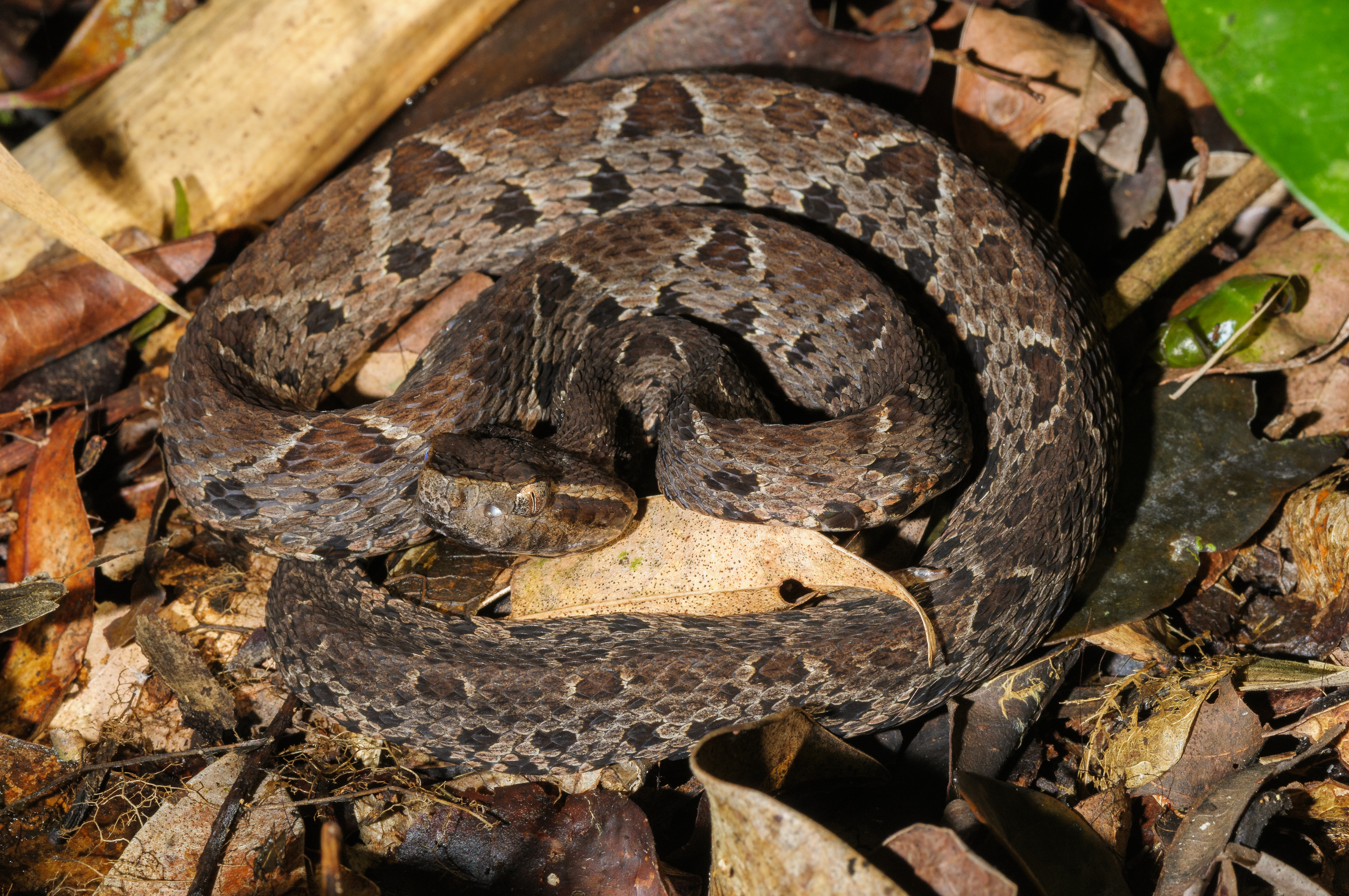Jararacussu
(Bothrops jararacussu)

Description
Bothrops jararacussu, commonly known in English as the jararacussu, is a highly venomous pit viper species endemic to South America. It is one of the most dreaded snakes in South America and can grow up to 2.2 metres (7.2 ft). The jararacussu is a fairly large pit viper; growing up to 2.2 meters long, with a robust body and head and very aggressive behavior. The color of the body and head varies widely, the background color can be brown or yellow almost black, the pattern of dark and light scales are constituted in a series of dark arches, the spots form on the dorsal midline, which look like a letter x. It has medium-sized eyes, with elliptical pupils vertically. With dorsal scales strongly keeled. They have large fangs with 2.5 cm, and can inject a lot of venom. They usually feed on amphibians and rodents. They are ovoviviparous, giving birth to between 16 and 20 young, in the rainy season. Mainly diurnal and nocturnal, they usually warm up in the morning sun and venture forth to hunt at night. It is found in South America in coastal Brazil (from Bahia to Santa Catarina), Paraguay, southeastern Bolivia, and northeastern Argentina (Misiones Province). They can be found in the atlantic forest and semi-deciduous forest. They also live in perennial forests, pine forests in Paraná in low swampy regions and along river banks. In Brazil, Bothrops jararacussu is known by many common names, among which are the following: jararacuçu, jararacuçu-verdadeiro, patrona, surucucu, surucucu-dourada, surucucu-tapete, urutu-dourado, and urutu-estrela. Elsewhere in South America it is called Yarara-cussu, Yarara dorada, Yarara guasu, Yarara guazu, Painted Yope and Yoperojobobo. Like all other species in the genus Bothrops, the jararacussu has rather potent venom, potent enough to kill sixteen people. The venom contains cytotoxins, hemotoxins and myotoxins, one study with 29 bites of jararacussu in the state of São Paulo, Brazil. Severe signs of local and systemic envenoming such as necrosis, shock, spontaneous systemic hemorrhage and renal failure were observed in patients bitten by specimens over 50 cm. Smaller specimens were more likely to cause blood incoagulability. Fourteen patients developed coagulopathy, six had necrosis (causing amputation of one) and five had abscess. Two were in shock, while four developed kidney failure.
Taxonomic tree:







